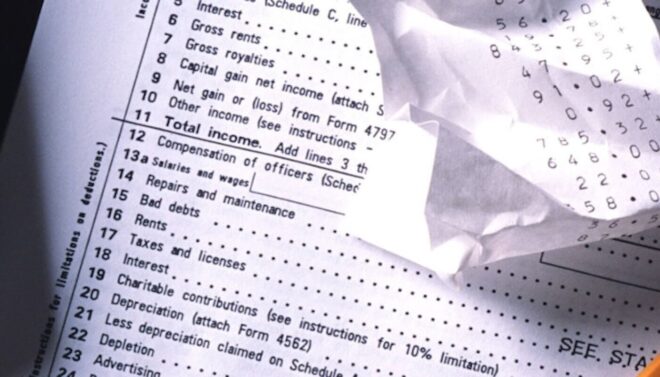What is paperless payroll?
Editorial Team
7 min read
Nearly all businesses and employees are familiar with the traditional payroll process. Employees clock in, punching in and out on a time clock card or logging their time on a paper form; paychecks are handed out at the office or mailed to the employee’s home; and records are stored in filing cabinets or bankers boxes.
A paperless payroll system does all of the above, but without the use of material resources. Instead, an employee enters hours worked into an online portal; paycheck stubs are sent electronically via email or saved in the employee’s profile; and records are stored virtually in the cloud-based payroll software. Although offering paperless pay for employees requires some setup, there are compelling reasons why you may want to switch your business to electronic payroll. Solutions like RUN Powered by ADP® is just one of the ways your small or mid-sized business could take payroll to the next level.
Keep reading to learn about some of the benefits.
How a paperless payroll system benefits employers and merchants
Below are just some of the advantages your business can enjoy when using paperless pay for employees:
1. More cost-efficient payroll services
Sending and receiving paper-based checks can quickly add up when you consider all the material inputs, including paper, ink, envelopes, and stamps. Using an electronic payroll system helps to eliminate these costs in much the same way that email is more cost-effective than sending physical letters. And, digital payroll is more sustainable than using paper checks.
According to one analysis, companies can save approximately $2.87 to $3.15 per run when paying employees electronically via direct deposit instead of using traditional paper checks.1 Your business can save an additional $1.20 per employee each billing cycle if you provide pay stubs online.1 Platforms such as ADP, which is integrated into the Clover POS system, can help automate direct deposits and digital pay stubs, reducing material costs and improving efficiency.
2. Faster processing
In addition to material expenses, physical checks carry many hidden costs in terms of time spent printing, signing, sealing, and delivering each pay slip. Even if you assign these tasks to employees, they’re still on the clock. As such, there are direct costs in the form of wages when processing payments manually.
By contrast, paperless payroll is automated according to a schedule you determine and control in advance. If your team gets paid biweekly, for example, you can set up electronic checks to go out every other Friday with the click of a button once numbers have been reviewed and approved by you or your payroll team.
3. Improved reliability
Paper-based checks can get lost or delayed in the mail. With electronic payments, however, direct deposits arrive in the employee’s preferred payment account on the date scheduled. Pay stubs are also accessible online. This creates a more reliable way to compensate employees.
Equally important, electronic payroll services can be less prone to human error. Because all calculations are done using the software, the totals and deductions can be more accurate than if you have someone processing payroll by hand.
4. Better file management
The Fair Labor Standards Act mandates that companies keep payroll documentation for at least three years.2 These requirements are in addition to whatever state-level regulations might apply in your jurisdiction.
If your payroll system relies on hardcopies, you’ll need enough physical cabinet space to store all of these records. It takes time to archive and retrieve individual time sheets and pay slips when using physical storage systems. However, when your payroll is electronic, all of this information lives in the cloud–allowing you to quickly organize and retrieve records using any connected device.
5. Greater security
Despite the “anytime, anywhere” access that electronic payroll systems offer, there are usually multiple layers of built-in security to try to mitigate the risk of unauthorized access. In most cases, the entire system is password-protected, with only authorized users having direct access to sensitive employee information.
With all of your files being stored in the cloud, this also helps protect your records from in-person theft, fires, floods, or other disasters that could destroy all physical hardcopies. Investing in cloud-based storage also has redundancy built in, allowing you to backup your records and keep sensitive employee information as secure as possible.
The advantages of paperless pay for employees
Many of the above benefits also carry over to your workers. For example, they can enjoy faster payments, fewer delays, and fewer trips to the bank–making electronic paychecks far more convenient than their hardcopy counterparts. Depending on how you set up your electronic payroll system, those employees can also access hours worked, tax forms, and pay stubs from a self-service portal with their connected devices. For the average worker, this type of self-service is a lot more appealing than scheduling in-person appointments with the payroll department.
The societal benefits of paperless payroll
In addition to all the advantages that your company and employees can enjoy when switching to electronic payroll, there are some societal benefits, including:
- Carbon savings: Although electronic payroll requires energy, the environmental impact is far less than when using physical resources such as paper.
- Social distancing: Sending and receiving physical checks often requires in-person interactions between postal workers, bank tellers, employers, and employees. Paperless payroll, however, can help minimize these interactions.
Components of a paperless payroll solution
Electronic payroll is an umbrella term that encompasses many aspects of the larger payments ecosystem. As a business owner, you have the option of migrating some or all of your current payroll activities to a paperless system:
- Electronic funds transfer (EFT) describes the method by which you transfer payment from one account to another. In most cases, this involves direct deposits – made possible with electronic payment networks such as the Automated Clearing House. However, it’s also possible to deposit funds on a payroll card that operates in much the same way that traditional credit or debit cards work.
- Electronic payroll recordkeeping involves the digital storage of documents, records, and pay stubs – all of which must be kept for at least three years.
- Employee self-service systems are what allow your workers to access relevant information about their employment, including benefits, payment history, worker manuals, and tax forms. These self-service systems can also be used to clock in and out of work. For example, ADP’s employee portals allow workers to access pay stubs, tax forms, and benefits information anytime, improving convenience and transparency.
Although the ultimate goal is to make your entire payment system truly paperless, it’s possible to make the transition in stages. This piecemeal approach allows you to grow accustomed to each new stage. You can also more accurately track the benefits and savings over time.
Get started with a paperless payroll system
As a leader in the POS industry, Clover helps businesses simplify operations by integrating their POS systems with the biggest name in payroll, like ADP, to help small businesses pay their employees more quickly, easily, and more securely. Learn more about Clover’s ADP integration or connect with a Business Consultant today. For more information on how paperless payroll works, learn more from ADP.
1 “Paperless Pay: Should You Make the Switch?” Business News Daily, 6 October 2021
2 “Fact Sheet #79C: Recordkeeping Requirements for Individuals, Families, or Households Who Employ Domestic Service Workers Under the Fair Labor Standards Act (FLSA),” U.S. Department of Labor
This information is provided for informational purposes only and and is not sponsored by ADP and should not be construed as legal, financial, or tax advice. Readers should contact their attorneys, financial advisors, or tax professionals to obtain advice with respect to any particular matter.
Related Posts
16 ways business owners can save on taxes
Celebrating MTM merchants for National Ice Cream Month!
Popular Topics
Stay in touch
Sign up and learn more about Clover.
Thank you for your subscription!
More posts about starting a small business
eBook





